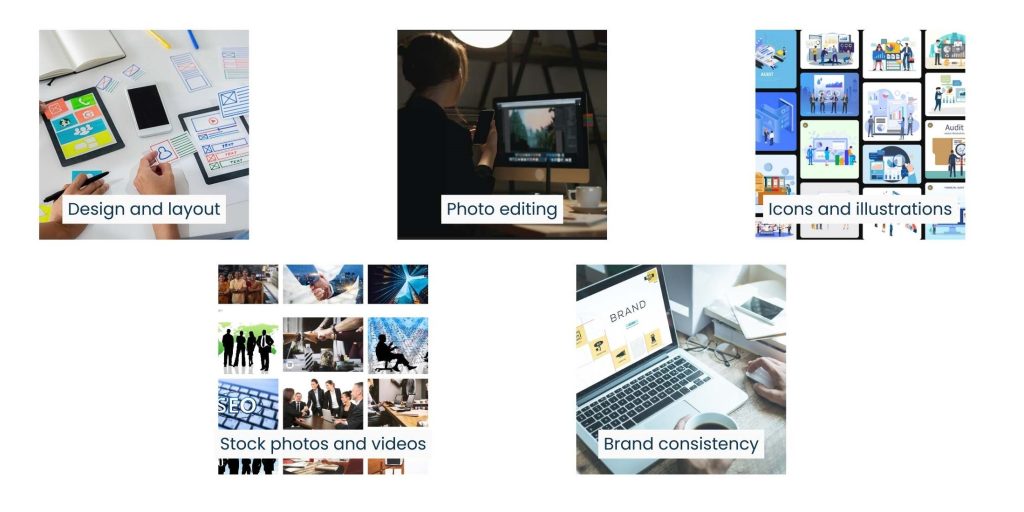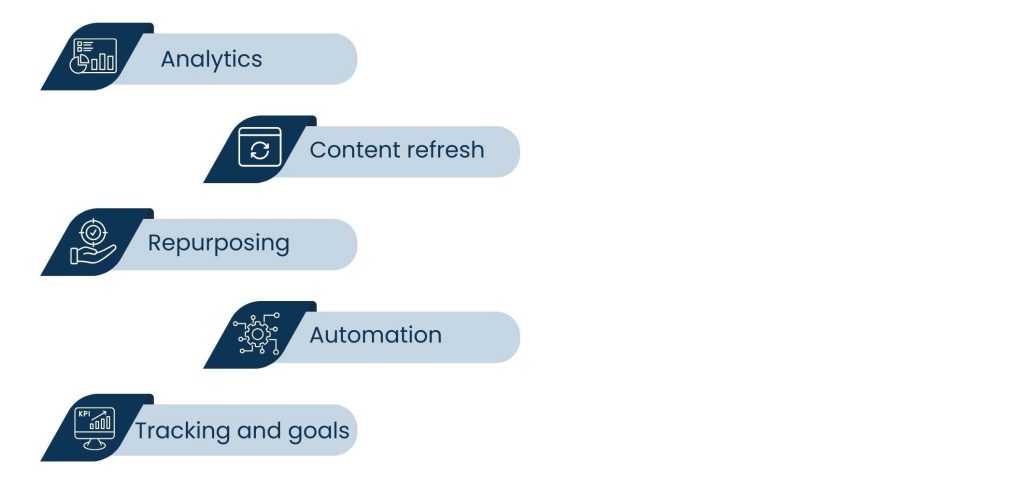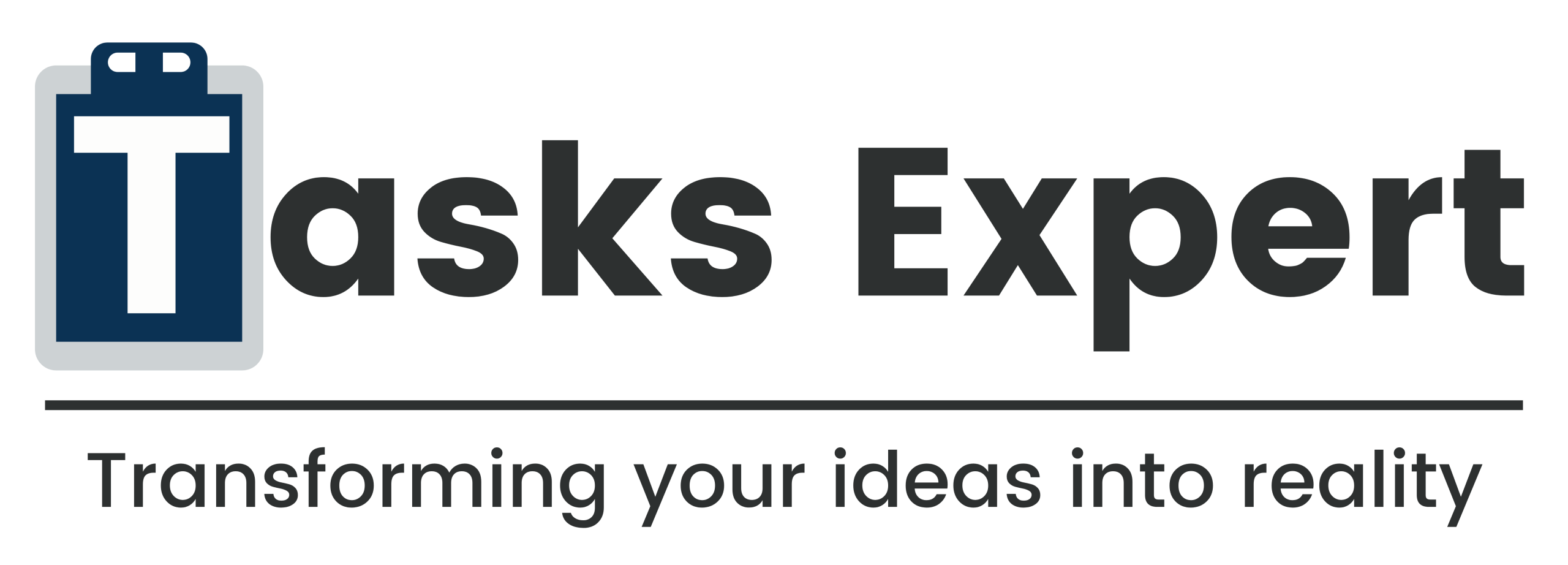Introduction
Whether launching a new brand or reviving an old one, fantastic content does not need to cost you a fortune. Through proper zero-cost tools, you can plan, write, design, and publish without ever having to purchase software. Current free plans are strong enough for most everyday requirements, and they work well together once you establish a simple process.
Here in this guide, I am discussing free tools that are simple to master and good enough for actual work. There will be recommendations for writing, visuals, video, planning, publishing, and measurement. I also present a few tips that save time to ship more content per week.
Use this as a starter kit. Experiment with one tool from each section, retain what feels comfortable, and stack your tools incrementally. The idea is to eliminate friction so ideas transition from draft to published with ease.
Zero-cost solutions for writing and ideas

Drafting and notes
Google Docs and the free versions of Notion are more than sufficient for individual writers and small groups. Docs is ideal for rapid drafts with comments. Notion provides you with a clean home for ideas, briefs, and templates.
Enable offline mode in Docs to write offline. Employ version history to contrast drafts or undo changes. In Notion, create a basic database of content ideas with status and tags to remain organized.
Research and ideas
Use Google Trends and People Also Ask to view how people phrase questions. Use Also Asked and Answer Socrates to map relevant questions. Have one page of questions you desire your content to address.
Save great questions to your idea bank the instant you discover them. Include the source link so that you will be able to give it credit later. Create Google Alerts for your core topics to gather new angles automatically.
Outlining
Convert questions into a basic H2 and H3 format. Include bullets for major points under each subheading. It makes writing quicker and maintains the page skimmability.
Timebox your outline to ten minutes so you won’t get stuck. Ensure each H2 responds to one clear user question. If a subheading doesn’t deserve its position, cut it.
Editing
Hemingway Editor and Grammarly Free pick up on clarity errors and typos. Read your intro aloud to catch awkward sentences. Short sentences are a winner on mobile.
Do one revision for clarity and another for tone, not simultaneously. Read your draft on your phone to catch long lines and filler. The final text-to-speech check will bring up awkward phrasing.
Free solutions for visuals and design
Compelling visuals make content easier to trust and share. These free solutions assist you in designing graphics without a paid suite.

Design and layout
Canva Free and Figma Free can cover most requirements. Utilize brand kits and templates to maintain a consistent appearance. Copy a previous design to save setup time.
Create a master file with reusable elements so headers and CTAs remain consistent. Implement an easy 8-point spacing system to maintain tidy layouts. Create export presets for blog headers, thumbnails, and social sizes to work quickly.
Photo editing
Photopea is browser-based and operates like Photoshop. Squoosh compresses images so pages load quickly. Keep image widths in check so you don’t end up with bloat.
Crop to subject and straighten horizons before you mess with color. Export WebP or compressed JPEG for web and remove EXIF data. Target 1200 to 1600 px width for blog images unless you need bigger. Outsourcing photo editing is also a good idea to maintain the quality.
Icons and illustrations
UnDraw and Open Doodles provide free SVGs. Flaticon provides free icons under the Creative Commons attribution license. Use one style per article for a clean look.
Rerender icons to your brand colors so they all match. Convert strokes to outlines prior to export to prevent rendering problems. Optimize SVGs with a quick run through an SVG minifier to leave pages light.
Stock photos and videos
Unsplash, Pexels, and Pixabay have you covered on most subjects. Add brief descriptive alt text for accessibility and search purposes. Crop to social sizes as you do so.
Ensure you check the license and attribution information on each site. Steer clear of clichés by sorting by newest uploads or niche keywords. Trim video clips down to the essential three to seven seconds and export at 16:9, 1:1, and 9:16 for various channels.
Brand consistency
Reuse color palettes and designs to create familiarity. Save a minimalist style guide within your design tool. Consistency trumps intricate effects.
Save hex codes, font sizes, and spacing conventions on one reference page that anyone can access. Label files with a clear convention so assets are simple to search. Restrict typefaces and effects so the brand appears clean on every post.
Create a small asset library for headers, product shots, and diagrams. Professional branding strategy services speed up new posts and keep your brand steady across channels.
Zero-cost solutions for video and audio
Short videos and clean audio lift engagement across platforms. You can record, edit, and caption with these zero-cost solutions.

Recording and capturing
OBS Studio captures screens, windows, and webcams. Avoid complicated scenes to prevent clutter. Make test clips to ensure audio levels are okay.
Set 1080p at 30 fps for a silky default that will go anywhere. Use global hotkeys to begin and end so that recordings are tidy. Make your background clean and enable a simple noise gate to remove the fan drone.
Editing
CapCut Desktop and DaVinci Resolve Free are heavy hitters for cuts, titles, and exports. Begin with an intro and lower thirds template. Video needs to be tight and centered around one takeaway.
Utilize ripple delete to cut pauses quickly. Place B-roll after jump cuts so the narrative flows. Export as MP4 1080p with a reasonable bitrate to get quality and file size in check.
Audio cleaning
Audacity cleans up noise and cuts out pauses. A simple high-pass filter can clarify voices. Record near the mic in a silent room.
Normalize volume so the clips are even throughout. A gentle compressor keeps the whispers and louder sections even. A foam windscreen or pop filter addresses harsh P and B sounds.
Captions and subtitles
YouTube auto captions are a quick launch. Fix names and jargon in them. Burn captions into short social clips for silent autoplay.
Also, create an SRT file and upload it to every platform for higher accuracy. Shorten lines and sync them tightly to dialogue. Include a plain on-screen CTA toward the end for viewers who view on mute.
Thumbnails
Create thumbnails in Canva with a bold font and a definite subject matter. Use the same design every time for brand recognition. Test two and reserve the better.
Try for three to five words readable on a phone. Utilize a close-up face or a single distinct object with high contrast. Test the design at small sizes to ensure it still stands out.
Zero-cost planning and publishing solutions
A light process keeps content flowing. These zero-cost planning and publishing solutions enable you to plan, ship, and share without chaos.

Planning and tasks
Trello Free and Notion Free manage calendars, lists, and approvals. Have one board or page per month. Add owners and due dates so nothing gets stuck.
Label with content type and status so the board is simple to scan. Create recurring cards for posts each week to save initial setup time. Enable reminders for due dates so nothing falls through.
Content templates
Store post briefs, outlines, and image specs as templates. Reuse them for every new idea. Templates save thinking time and avoid skipped steps.
Add word count, target words, and internal links to the brief. Add an image checklist, an alt text checklist, and CTAs to ensure posts are always done. Save all templates in one shared folder so everyone is working from the same versions.
Publishing
WordPress.com Free, Medium, and LinkedIn Articles are simple places to publish. Substack is great for newsletters. Choose one home base and syndicate to the others.
Include a canonical link or mention when cross-posting to prevent duplicate content concerns. Schedule posts at the optimal time zones for your public. Label drafts with a simple convention such as “YYYY-MM-DD Topic” to keep files organized.
Distribution
Post to LinkedIn, X, and Facebook using natively published posts. Shorten key lines into concise social captions. Include one useful hashtag per platform.
Make the opening sentence platform-specific so it catches quickly. Mention partners or sources when you mention them to increase reach. Use UTM tags on link clicks so you can see what succeeded.
Documentation
Have a living guide that describes your process. New writers learn better, and quality stays high. Small teams perceive themselves as larger when the process is transparent.
Include a screenshot or brief screen recording for difficult steps. Revise the doc after every monthly retro with what you enhanced. Pin the guide in your workspace so you can always easily locate it.
A consistent beat sounds greater bursts. One good post a week is superior to five bad drafts that never get released.
Free solutions for measurement and repurposing
You get better at what you can measure, and you’re growing more when you reuse what you create.

These free solutions tighten the loop:
Analytics
Google Analytics 4 and Search Console indicate traffic, queries, and click-through rates. Monitor which pages generate sign-ups or leads. Apply UTM tags on social links to learn what works.
Create a basic dashboard of three weekly-checked cards. Include annotations on publication or promotion so spikes are understandable. Utilize GA4 Explorations to view typical reader paths after entering.
Content refresh
Refresh top posts with fresh examples and dates quarterly. Include a brief FAQ if you notice new questions in search terms. Refreshes are quick rank gains.
Maintain a change log of what you changed and why. Update stale screenshots and repair broken links while you are at it. Compare figures 14 and 30 days post-refresh to ensure the effect.
Repurposing
Convert a blog into a short video, carousel, and email. Extract two or three quotable sentences and create graphic cards on Canva. Bundle related posts into a quick guide.
Store reusable snippets in a small content bank so ideas travel faster. Schedule the repurposed pieces over four weeks to extend reach. Link each format back to the main post to consolidate authority.
Automation
IFTTT and Zapier Free can cross-post or log ideas to a sheet. Keep automations light to avoid a mess. Review them monthly to stay tidy.
Employ triggers such as “new post published” to generate social drafts or tasks automatically. Track each published URL to a Google Sheet to monitor and ensure UTM consistency. Record each automation in a single note so anyone can keep it up.
Tracking and goals
Choose three metrics to monitor each month, like posts published, email signups, and search clicks. Small targets snowball. Celebrate success so the habit will stick.
Set a low bar today and target 10–20 percent improvement next month. Pick one north star metric, such as leads or subscribers, to stay focused. Get the team together and give a quick monthly report so everyone can see what worked.
Measure, adjust, and reuse. That loop makes free tools a real growth driver.
Conclusion
Whether you’re a one-person show or a small shop, zero-cost tools can handle nearly everything you want to plan, make, and distribute. Begin with one tool per group and maintain a light workflow. If a tool feels like too much, replace it with a lighter alternative. The optimal stack is the one you use weekly.
Create a brief checklist for every new content. Create, design, caption, publish, share, and measure. And then redo the same idea in some new forms. Within a month, you will witness more content, more consistency, and more visibility without additional spend.
If you are looking for a fast starter kit that is specifically for your niche, I can assist you in selecting the precise tools and establishing a straightforward weekly routine. Tasks Expert prefers useful, minimal effort systems that deliver work, not only plans.
About Us
Tasks Expert offers top-tier virtual assistant services from highly skilled professionals based in India. Our VAs handle a wide range of tasks, from part time personal assistant to specialized services like remote it support services, professional bookkeeping service etc. Furthermore, it helps businesses worldwide streamline operations and boost productivity.
Ready to elevate your business? Book a Call and let Tasks Expert take care of the rest.









